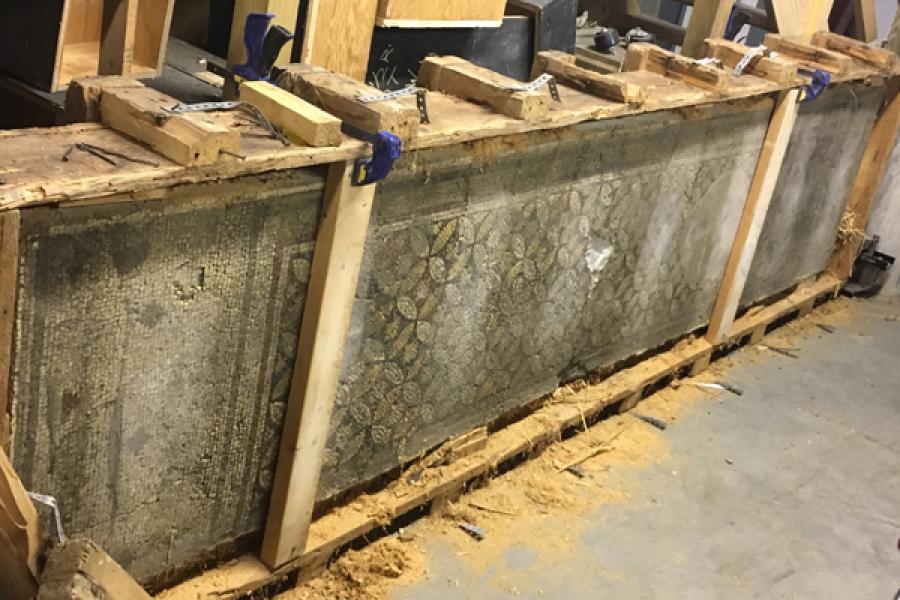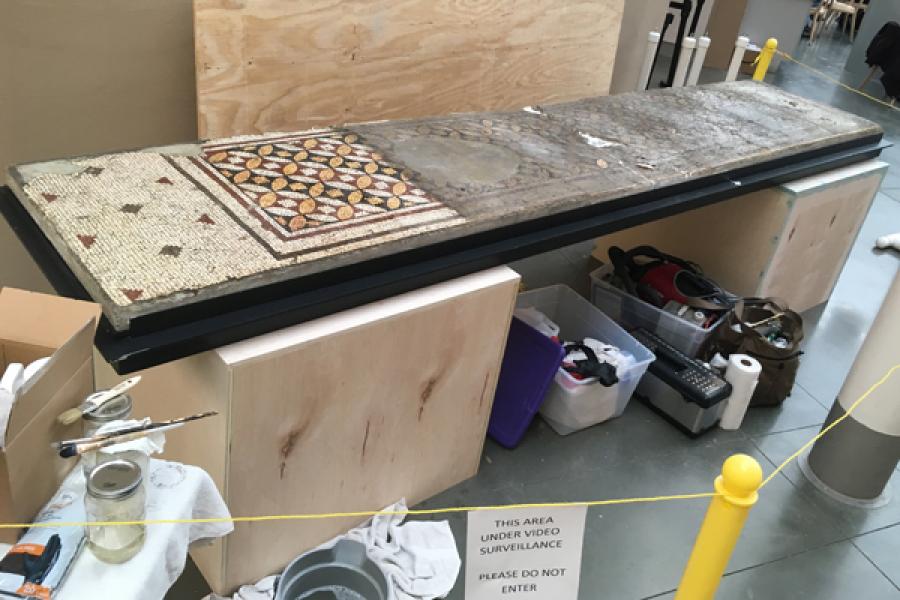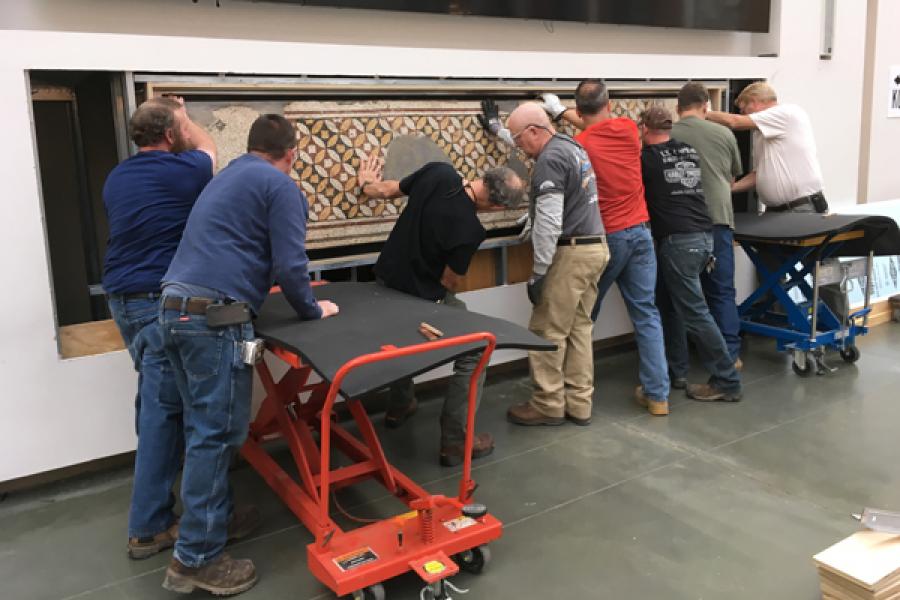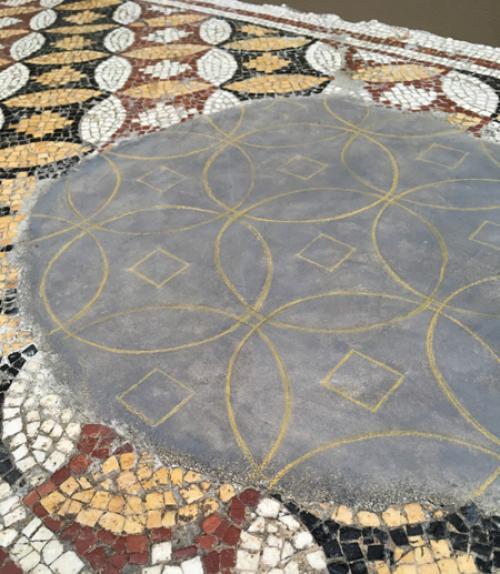A fragment of a second-century floor mosaic that sat in storage for nearly 80 years now holds a place of honor in the Groos Family Atrium in Klarman Hall.
The mosaic, a gift from Princeton University researchers to Cornell colleagues, was located in the house of Iphigenia in the northeastern part of the city of Antioch on the Orontes (modern Antakya in southernmost Turkey). Built on the terraced hillsides of Mount Silpios and overlooking the Orontes valley, the luxury homes of this time period exhibited a dazzling array of floor mosaics depicting scenes from ancient myth and “real life.”
The Klarman mosaic adorned one of the houses’ several dining rooms. Archaeological evidence, in particular a coin of emperor Marcus Aurelius (ruled 161-180 CE) found on top of it, date it to the 2nd century AD. Made of small cubes (tesserae) of black, grey, red, yellow, and white limestone, it does not compete with some of the more colorful and intricate “paintings in stone” from the same site. But the precision and regularity with which the tesserae have been cut and arranged betray sophisticated craftsmanship.
The mosaic was discovered in 1938 by the Franco-American Committee for the Excavation of Antioch on the Orontes (at that time, the city belonged to the French mandate in Syria).
Several American institutions under the leadership of Princeton University participated and were subsequently “rewarded” with archeological finds, in particular many of the almost 300 mosaics the committee lifted.
Cornell was not among them, but Frederick O. Waage, Cornell professor of history of art and archaeology, joined the team in 1933 and 1937-39. It is probably due to this collaboration that the university received the present fragment, which originally was headed to join the collections of the Princeton Art Museum, next to the Antakya Museum the most important repository of mosaics from Antioch. After it was received, the mosaic appears to never have been unpacked.
The presentation of Cornell’s mosaic, almost 80 years after its discovery, is due to the efforts of Henry Crans, director of facilities for the College of Arts & Sciences, and the restoration efforts of local art conservator Kasia Maroney. The project was funded by the College of Arts & Sciences.The restoration involved removing the 800-pound mosaic from its original packing crate and first testing and repairing the cement slab on which the tiles are mounted, before placing the entire piece on a custom steel and wooden platform created by Cornell carpenters. All of this was done in the Arts & Sciences warehouse on Abbott Road before its move to the atrium.
Once in the atrium, Maroney tested appropriate cleaning solvents to determine which one would be most effective, then set to work.
“This was a really satisfying project, and while I was working, so many people stopped to watch and ask questions, and were just so fascinated and thrilled to learn about it,” she said.
She removed thick layers of dust and environmental pollutants, as well as discolored surface adhesives that had been used to move the mosaic to a new cement slab during its excavation. She then filled voids in the tesserae with gypsum plaster, which she colored to approximate the color of the untreated cement.
After the mosaic restoration was finished, it was lifted with hydraulic lifts to the height of the prepared installation site below the giant digital screen in the atrium, then tipped onto its edge so the bottom edge rested on a small ledge that had been pre-welded onto the bottom of its steel and wood support.
The entire support was bolted in several places to steel framing that had been tied into the architecture of the wall. The installation was a joint effort between the Cornell Carpenters, Metalworkers and Movers.
When the project is completely finished, the mosaic will be framed and enclosed behind glass.
Annetta Alexandridis is an associate professor in the Departments of Classics and History of Art & Visual Studies.







